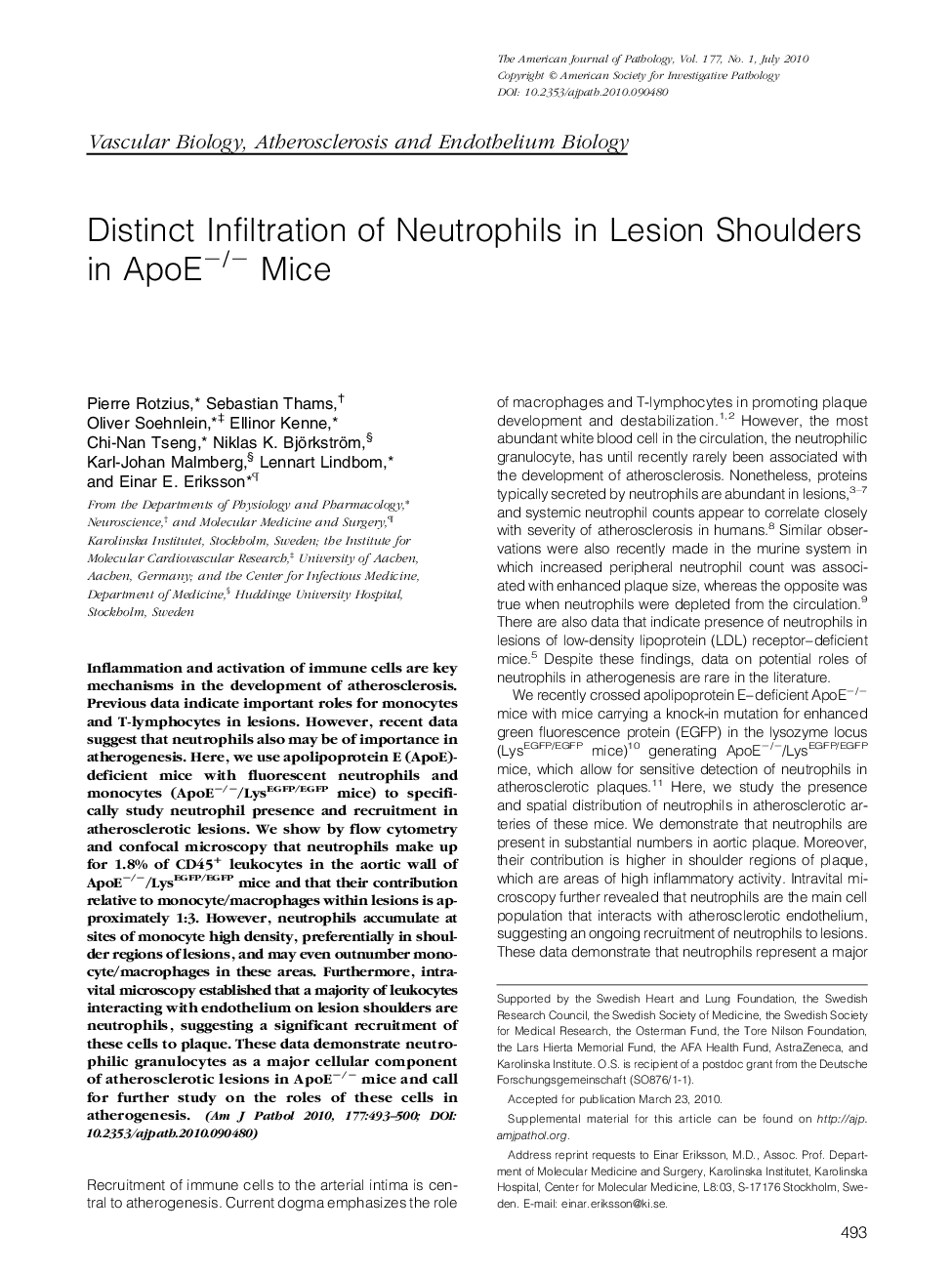| Article ID | Journal | Published Year | Pages | File Type |
|---|---|---|---|---|
| 5935348 | The American Journal of Pathology | 2010 | 8 Pages |
Abstract
Inflammation and activation of immune cells are key mechanisms in the development of atherosclerosis. Previous data indicate important roles for monocytes and T-lymphocytes in lesions. However, recent data suggest that neutrophils also may be of importance in atherogenesis. Here, we use apolipoprotein E (ApoE)-deficient mice with fluorescent neutrophils and monocytes (ApoEâ/â/LysEGFP/EGFP mice) to specifically study neutrophil presence and recruitment in atherosclerotic lesions. We show by flow cytometry and confocal microscopy that neutrophils make up for 1.8% of CD45+ leukocytes in the aortic wall of ApoEâ/â/LysEGFP/EGFP mice and that their contribution relative to monocyte/macrophages within lesions is approximately 1:3. However, neutrophils accumulate at sites of monocyte high density, preferentially in shoulder regions of lesions, and may even outnumber monocyte/macrophages in these areas. Furthermore, intravital microscopy established that a majority of leukocytes interacting with endothelium on lesion shoulders are neutrophils, suggesting a significant recruitment of these cells to plaque. These data demonstrate neutrophilic granulocytes as a major cellular component of atherosclerotic lesions in ApoEâ/â mice and call for further study on the roles of these cells in atherogenesis.
Related Topics
Health Sciences
Medicine and Dentistry
Cardiology and Cardiovascular Medicine
Authors
Pierre Rotzius, Sebastian Thams, Oliver Soehnlein, Ellinor Kenne, Chi-Nan Tseng, Niklas K. Björkström, Karl-Johan Malmberg, Lennart Lindbom, Einar E. Eriksson,
